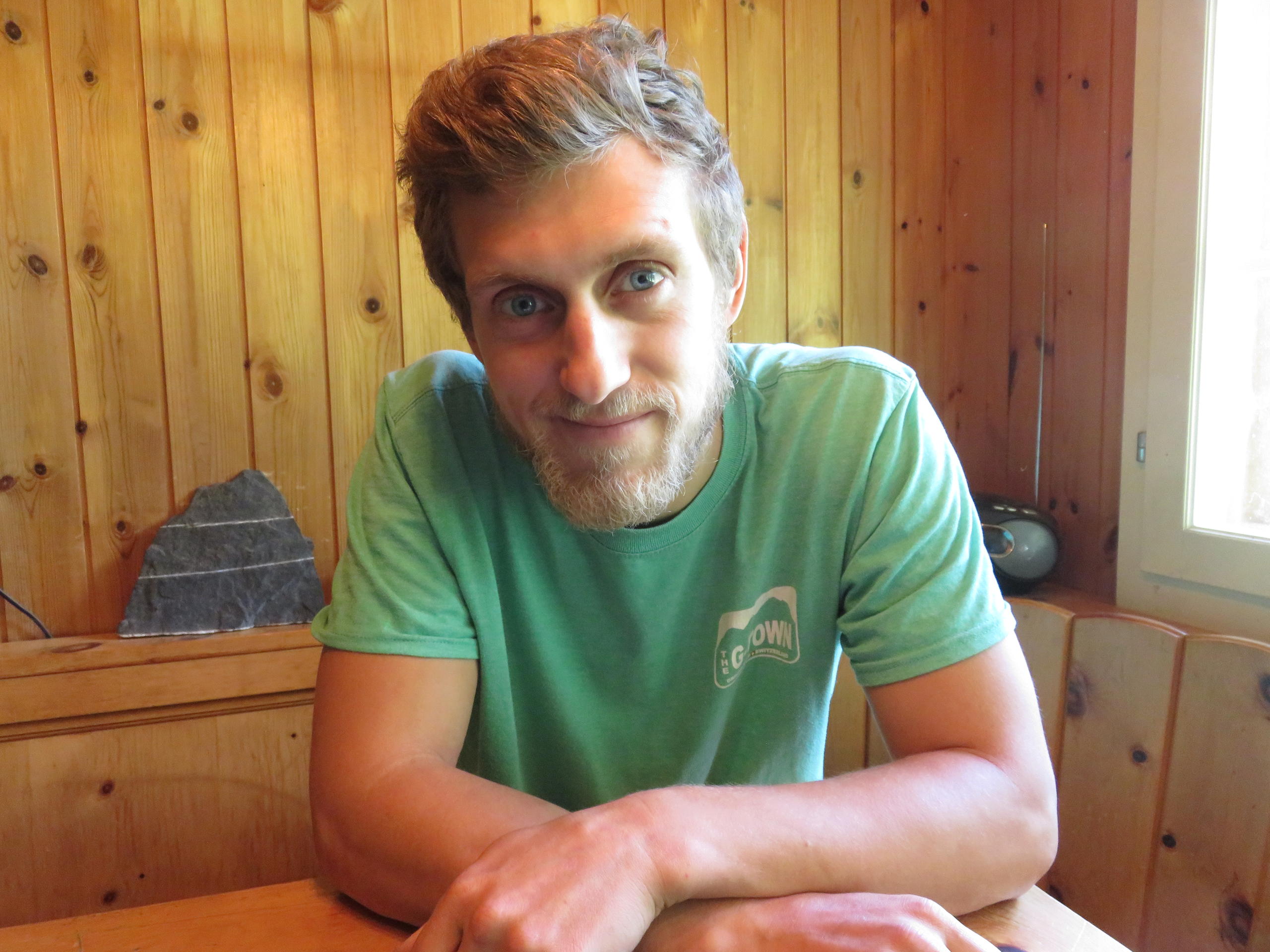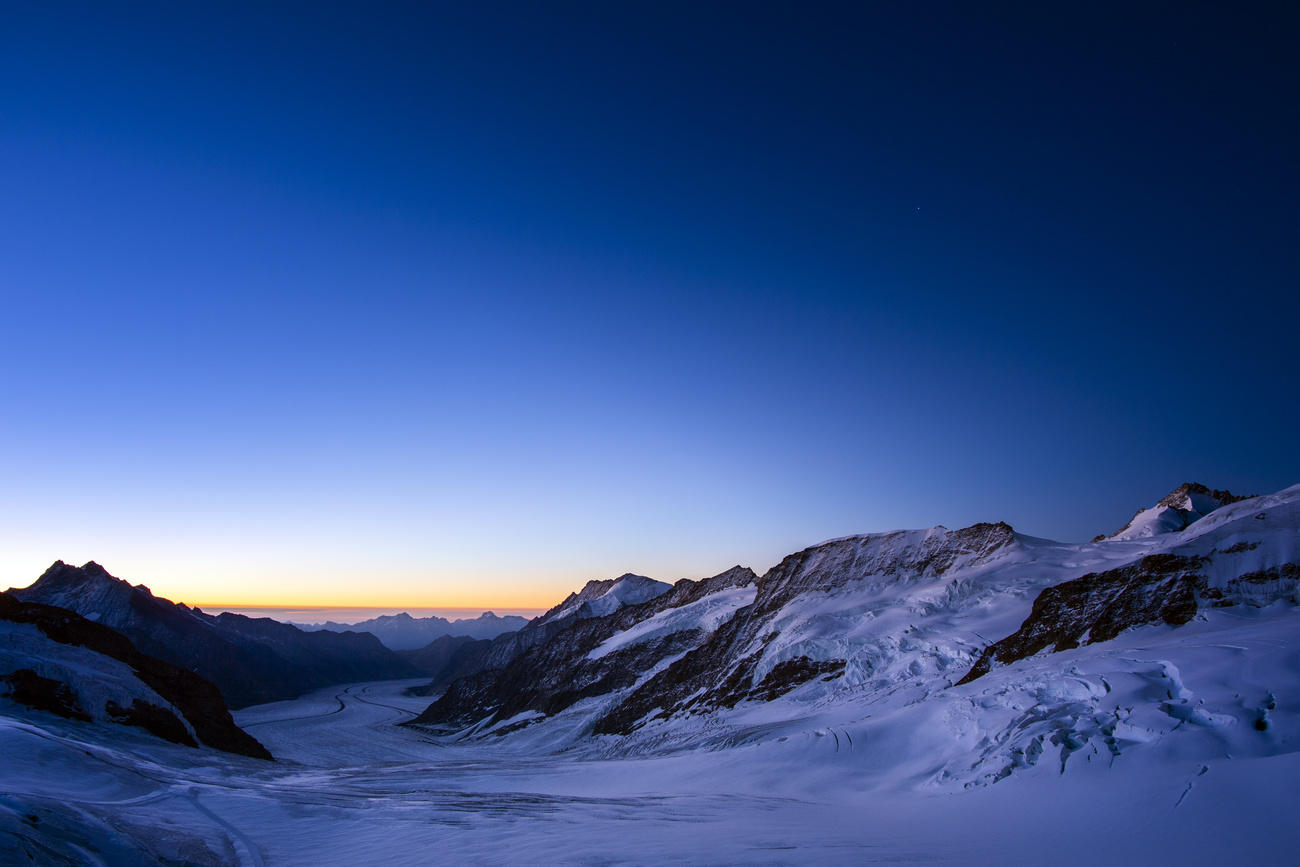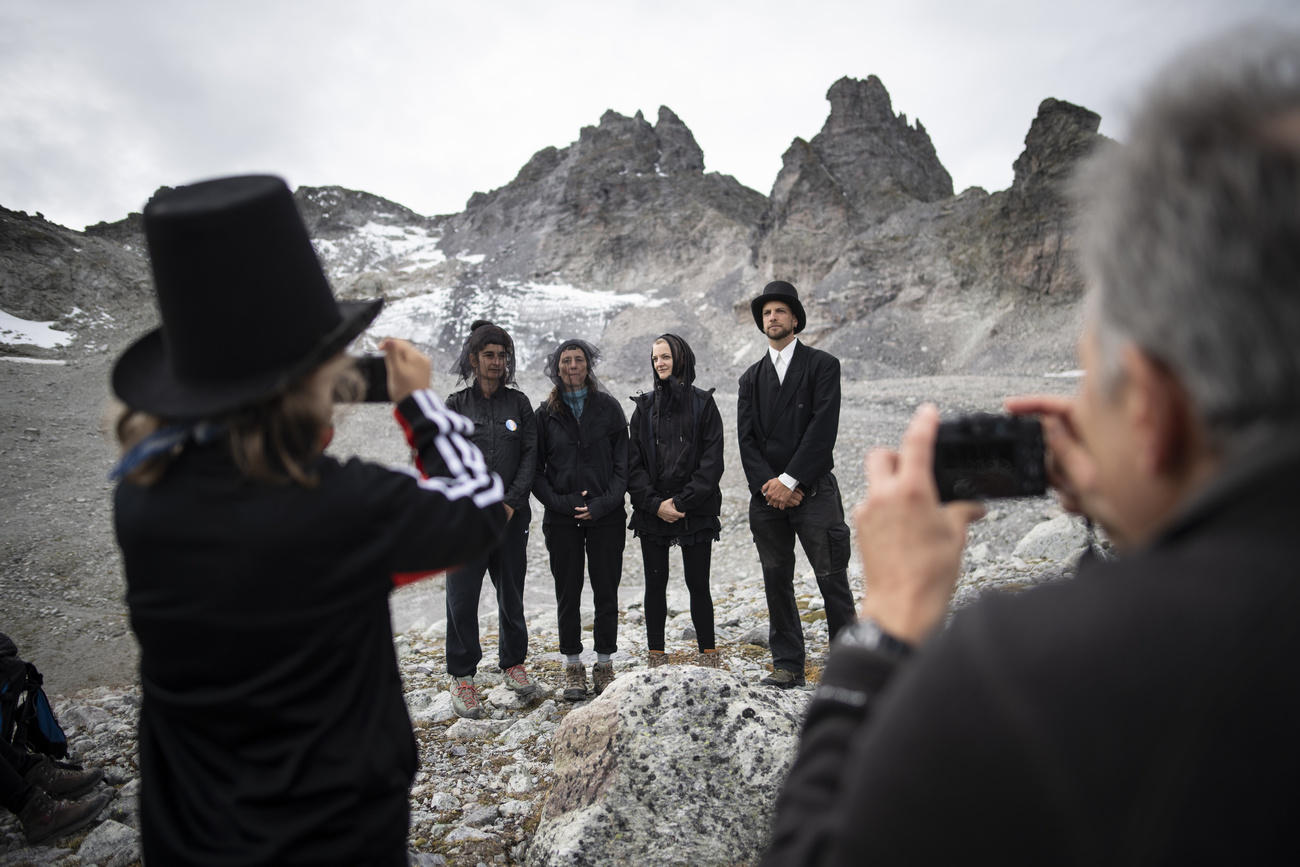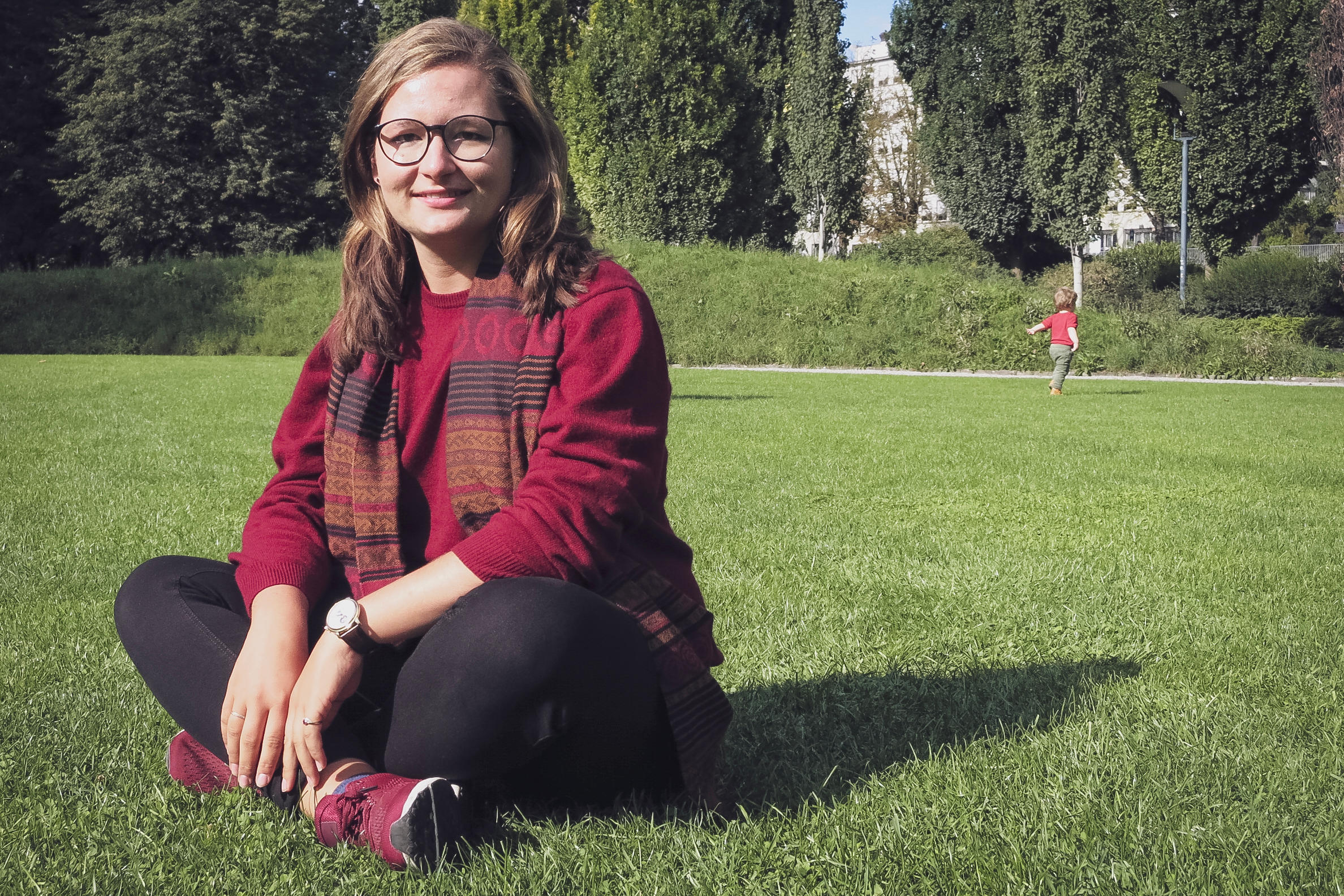What we can learn from glacier-surfing turtles
Climber Dan Moore has made a rare sighting in the Swiss Alps. In the first of a series of articles by the alpinist, Dan draws an unexpected analogy to explain how very alive glaciers are. It’s a poignant reminder of what we are in danger of losing.
We step off the moraine into a fairy-tale desert of ice and rock. Boulders, scattered evenly across the glacier’s surface, resemble an army of turtles poised on pedestals.
How did they get to be so evenly spread out? On one rather large, flat turtle I sit to contemplate.
Friends of mine had just come back from the South Pacific, where on one particular island they had witnessed turtles playing in the surf. I thought only marine mammals like whales and dolphins were known to play in the surf. They couldn’t believe it either, but yes, the turtles really were surfing: Ducking and diving, flapping their fins upon the frothing cyan surface.
My own turtles are very much more stoic. Stolid. Stationary. Only to my eyes of course. In geological time, even glaciological time, they must be sprinting across the ice. But why? And how?
It takes only a moment to piece the puzzle together. This glacier, the Lauteraar, runs west to east almost exactly. Along its northern edge runs an impressive lateral moraine, its rubble having been hewn from the southeastern foot of the peak, the Nasse Strahlegg, at the point where the higher Finsteraar glacier merges with the Lautereaar. Later, as this creaking, glacial freight train moves along, the constant upheaval sends chunks of rock tumbling down off the moraine onto the main body of the glacier – a broad stretch of predominantly bare, translucent, blue ice. Here is where the magic begins. The rocks come to life and start to move.

As I look about, I notice that most of the boulders strewn across the ice are roughly Galapagos tortoise-sized. Based on previous observations, I realise that smaller ones, instead of providing shade for the ice, will tend to heat up, and burrow into the frozen surface. Larger ones on the other hand, it is only logical, must take a lot more time to get around.
The sun, moving east to west across the sky, melts the ice around the boulders, but not beneath or immediately behind them, until eventually they stand proud upon ice pedestals; these are more commonly known as glacier tables. As the pedestal grows (actually the glacier surface is sinking), the sun melts more and more ice on its southern side, until eventually the boulder loses balance and topples down, before coming to rest once more a little south of where it previously stood. These are my rock turtles surfing frozen waves.
The whole process repeats itself, again and again. The rocks move out onto the glacier, new ones constantly coming into play, until it seems that an army of a turtles stands sentry over the ice, so perfectly spread out and similar in size that they might as well have been placed there in a ‘stratified random’ order by some mad scientist.
Is this simply a physical phenomenon explained by the laws of nature? I’m inclined to ponder the boundaries of a broader spectrum. Were these rocks sent by the mountains to protect the glaciers which hold them intact? Is there some level of consciousness here?
More and more the mountains feel alive to me. They seem to be waking up, full of emotion. Perhaps it is some new aspect of my own consciousness waking up. But they seem to be sad. Not angry as such, but certainly recalcitrant: take those little random stones that fall seemingly out of the sky, which glance off the rock ten centimetres away from where you’re climbing, like a ‘Hi there!’ from a conscious giant to the fly (me) upon his arm. Or that tiny patch of black ice, lying in wait amongst the scree, waiting for you to step on it and break your hip, testing your powers of observation.
Then there are those faces in the ice: that criss-cross of crevasses on the glacier below, captured in a photograph but only noticed later, which forms a perfect face looking up: One which has been trodden on – stabbed by the spikes of crampons. One which is collapsing from the inside; a face that’s cried a lifetime of tears. It seems too perfect and poetic to be mere superstition.
This glacier, like all others in the Alps, is withdrawing. It is misunderstood. And through being misunderstood, is unjustifiably being lost. An alpinist does not need stats or graphs to know what is happening. They feel it under their skin. In their hearts and bones. In their gut. With every passing year and each new precious moment experienced in the mountains. Sitting on some glacier table, pondering at all levels of consciousness, they become utterly aware that this is it. We are throwing this all away. Despite all nature’s last-ditch efforts to plead with us, to notify us of our actions, we are turning a blind eye.
Still. Imagine if the glaciers had advanced over the last thirty years the same distance that they have retreated. They would have buried the town of Grindelwald – my town. And rock turtles would now be surfing frozen waves above where it used to stand.

More
Largest Alpine glacier could lose half of volume by century’s end

In compliance with the JTI standards
More: SWI swissinfo.ch certified by the Journalism Trust Initiative



You can find an overview of ongoing debates with our journalists here . Please join us!
If you want to start a conversation about a topic raised in this article or want to report factual errors, email us at english@swissinfo.ch.